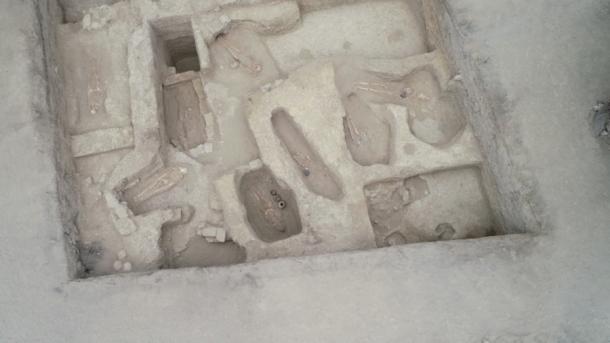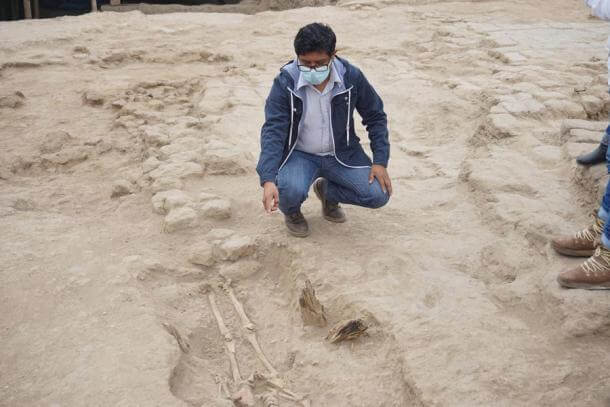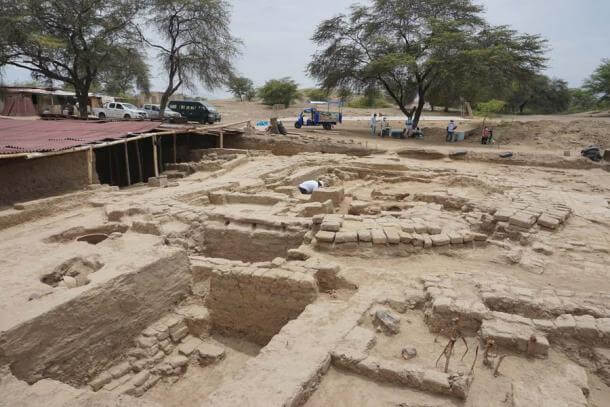 1
1

Tutankhamun's dagger comes from space
 01. 05. 2024
01. 05. 2024



 1
1

 01. 05. 2024
01. 05. 2024

 30. 04. 2024
30. 04. 2024


 28. 04. 2024
28. 04. 2024
 29. 10. 2021
29. 10. 2021

Archaeologists excavating an ancient temple site in northern Peru have discovered the remains of 29 bodies buried more than 1 years ago. These skeletons, which were discovered far from their traditional territory, caused a stir and could help rewrite the history of Wari culture.
The museum in Peru contains many artifacts and treasures of the people of Moche and Wari. The Wari culture dominated much of the territory of the earlier Moche cultures and later the Chim cultures. The museum has now published images of 29 human remains that were recently discovered in Huaca Santa Rosa de Pucala. This ancient ceremonial center is located in the coastal area of Lambayeque, about 750 kilometers (466 miles) north of the capital Lima.

The remains of 29 bodies, including the remains of the Wari culture, were excavated in Huaca Santa Rosa de Pucala in northern Peru.
The Moche culture, also known as the Mochica culture, developed between 100 and 700 AD on the northern Peruvian coast. The Wali were a Middle-horizon civilization that flourished between 600 and 1300 AD in the southern central Andes and coastal areas of today. The Huaca Santa Rosa de Pucala enclosure was built between 800 and 900 AD

Archaeologist Édgar Bracamonte Lévano, director of the Huaca Santa Rosa de Pucalá project, presents the remains discovered during their excavations.
29 skeletons were discovered by archaeologist Edgar Bracamonte Lévano, project director of Huaca Santa Rosa de Pucalá. During their excavations, three children and a teenager were found in front of the temple, who were associated with the Wari culture. These four young people are believed to have been sacrificed, possibly after an extreme drought or flood. At that time, communities went to extremes to appease their angry gods and goddesses. The remaining 25 skeletons were from the Moche culture. These remains were discovered inside the clay tombs and burial chambers in the temple. These human remains have been found along with the remains of llamas and alpacas.
What is so remarkable about this discovery is "where" it occurred. The capital, Wari, was located 11 km (6,8 miles) northeast of the modern city of Ayacucho in Peru. Bracamonte told PHYS that this was the first time a discovery had been made about the Wari civilization so far from their home.

Huaca Santa Rosa de Pucala is a ceremonial center located in the coastal area of Lambayeque in northern Peru.
What is Huaca? In the Quechua languages of South America, the huaca or wak'a is a deeply spiritual natural element, such as a huge rock or cliff, but also man-made monuments, shrines and temples. The work of Tom Zuidema and Brian Bauer showed how huacas were built along procedural ceremonial paths known as ceques. They helped in society-wide rituals and ceremonies centered around sacred spaces and places.
The skeletons found in Huaca Santa Rosa de Lambayeque were dated by radiocarbon, and a DNA study showed that the site was founded more than 3500 years ago. This sacred place had great spiritual significance during the Moche and Wari times, during the Inca rule until the arrival of the Spaniards in the mid-16th century.
Hour does not exist, yet all our teachings are in time. The author of this book will explain how the soul of all yours past lives it penetrates the lives of the future, how this intertwining of life manifests itself in your present being.